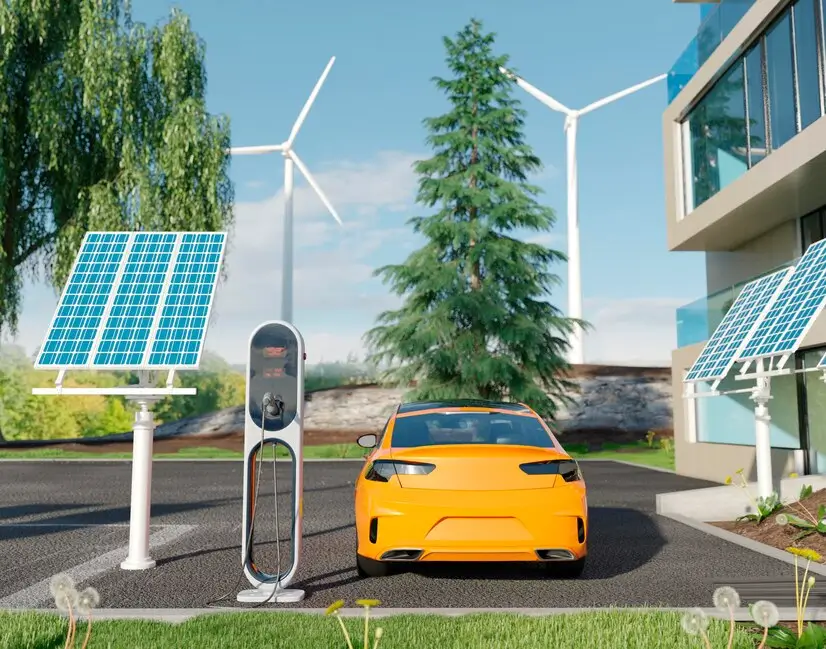Riding the Waves of Innovation: Unveiling the Future of Electric and Autonomous Vehicles
The automotive industry is on the brink of a monumental shift, ushering in an era dominated by electric and autonomous vehicles.
As technology continues to advance at an unprecedented pace, the future of transportation is being redefined, promising a safer, more sustainable, and more efficient way to navigate our world.

Evolution of Electric Vehicles
In the not-so-distant past, electric vehicles were often relegated to the sidelines, overshadowed by their internal combustion counterparts.
However, recent years have witnessed a remarkable evolution in electric vehicle technology.
From humble beginnings to the development of cutting-edge batteries, electric cars are now becoming a mainstream choice for eco-conscious consumers.
Autonomous Vehicles: A Technological Leap
Simultaneously, the concept of autonomous vehicles has emerged as a game-changer in the automotive landscape.
The integration of artificial intelligence and sophisticated sensor systems has propelled self-driving cars from science fiction to reality.
Today, autonomous vehicles are no longer a distant dream but a tangible technological leap.
Challenges in Electric Vehicle Adoption
Despite the promising advancements, challenges persist in the widespread adoption of electric vehicles.
High initial costs, coupled with limited charging infrastructure, pose hurdles for many potential buyers.
Overcoming public skepticism and addressing range anxiety are crucial for the broader acceptance of electric cars.
Advancements in Battery Technology
One of the cornerstones of the electric vehicle revolution lies in the continuous advancements in battery technology.
Breakthroughs in energy density, charging speed, and longevity have significantly improved the performance and range of electric vehicles, making them more appealing to a broader audience.
Integration of AI in Autonomous Vehicles
The heart of autonomous vehicles lies in the integration of artificial intelligence.
From adaptive cruise control to fully autonomous driving, AI algorithms are shaping the future of transportation.
However, challenges such as ethical decision-making and ensuring safety in complex traffic scenarios must be addressed to gain widespread public trust.
Economic and Environmental Impacts
The transition to electric and autonomous vehicles goes beyond technological advancements.
It carries substantial economic and environmental implications.
While electric vehicles promise reduced emissions and dependence on fossil fuels, their economic impact on traditional industries and job markets requires careful consideration.
Government Initiatives and Regulations
Governments worldwide play a pivotal role in steering the electric and autonomous vehicle revolution.
Substantial investments, incentives, and regulatory frameworks are being developed to encourage the adoption of clean and autonomous transportation.
However, striking a balance between innovation and safety remains an ongoing challenge.
The Role of Big Tech Companies
Tech giants are increasingly entering the automotive arena, reshaping the industry landscape.
Collaborations between traditional automakers and technology companies have become commonplace, leading to innovative solutions and driving the rapid evolution of electric and autonomous vehicles.
Consumer Adoption Trends
Consumer preferences are shifting as environmental consciousness grows. Understanding the factors influencing consumer decisions, such as charging infrastructure availability, government incentives, and the overall ownership experience, is crucial for predicting the trajectory of electric and autonomous vehicle adoption.
Infrastructure Development
The success of electric and autonomous vehicles hinges on robust infrastructure development.
From charging stations for electric vehicles to smart city networks for autonomous navigation, investments in infrastructure are paramount to ensuring a seamless transition to the future of transportation.
Safety Concerns in Autonomous Vehicles
As autonomous vehicles become more prevalent, ensuring safety becomes a paramount concern.
Developing fail-safe mechanisms, refining sensor technologies, and establishing industry standards are crucial steps in addressing safety concerns and gaining public confidence in self-driving cars.
Rise of Electric and Autonomous Fleets
The rise of electric and autonomous fleets challenges traditional notions of car ownership.
Shared mobility models, where autonomous electric vehicles operate as fleets, are gaining traction.
This shift has the potential to reshape urban landscapes and reduce the need for personal vehicle ownership.

Global Market Trends and Projections
Analyzing current market trends provides valuable insights into the trajectory of electric and autonomous vehicles.
Projections suggest a significant increase in market share, driven by technological advancements, evolving consumer preferences, and a growing emphasis on sustainability.
Collaborations and Partnerships
Collaborative efforts between automotive and technology companies have become a driving force behind innovation.
Partnerships allow for the exchange of expertise, resources, and technology, leading to breakthroughs that propel the electric and autonomous vehicle industry forward.
Conclusion
The future of electric and autonomous vehicles is undeniably promising.
As technology continues to evolve, overcoming challenges and embracing opportunities will shape the way we commute, ensuring a more sustainable, efficient, and interconnected transportation ecosystem.
FAQs
Are electric vehicles truly more environmentally friendly than traditional cars?
Yes, electric vehicles produce fewer emissions and are more environmentally friendly compared to traditional combustion engine cars.
How do autonomous vehicles handle complex traffic situations?
Autonomous vehicles use a combination of sensors, cameras, and advanced algorithms to navigate and make decisions in complex traffic scenarios.
What role do governments play in promoting electric and autonomous vehicles?
Governments play a crucial role by offering incentives, investing in infrastructure, and creating regulatory frameworks to promote the adoption of electric and autonomous vehicles.
How are big tech companies contributing to the development of autonomous vehicles?
Tech giants are actively involved in the automotive industry, contributing to the development of autonomous vehicles through collaborations, investments, and technological innovations.
What are the major challenges in the widespread adoption of electric vehicles?
High initial costs, limited charging infrastructure, and public skepticism are significant challenges in the widespread adoption of electric vehicles.
How do autonomous vehicles address safety concerns?
Safety concerns in autonomous vehicles are addressed through the development of fail-safe mechanisms, rigorous testing, and adherence to industry safety standards.
What impact will electric and autonomous fleets have on traditional car ownership?
The rise of electric and autonomous fleets has the potential to significantly reduce the need for traditional car ownership, shifting towards shared mobility models.
What are the key market trends in the electric and autonomous vehicle industry?
Key market trends include a growing emphasis on sustainability, advancements in battery technology, and the increasing integration of artificial intelligence in autonomous vehicles.


